The Colosseum. Just saying the name gives you a thrill—and for good reason. This is the site we’d all been waiting to see, and we knew we wanted to experience it properly. Although we usually skip guided tours to stick to our budget, this was one time we decided to splurge. And we’re so glad we did.
We explored the Colosseum, Palatine Hill, and the Roman Forum, enjoying a perfect blend of storytelling and history. It was one of the most memorable parts of our time in Rome—not just for the adults, but for the kids too.
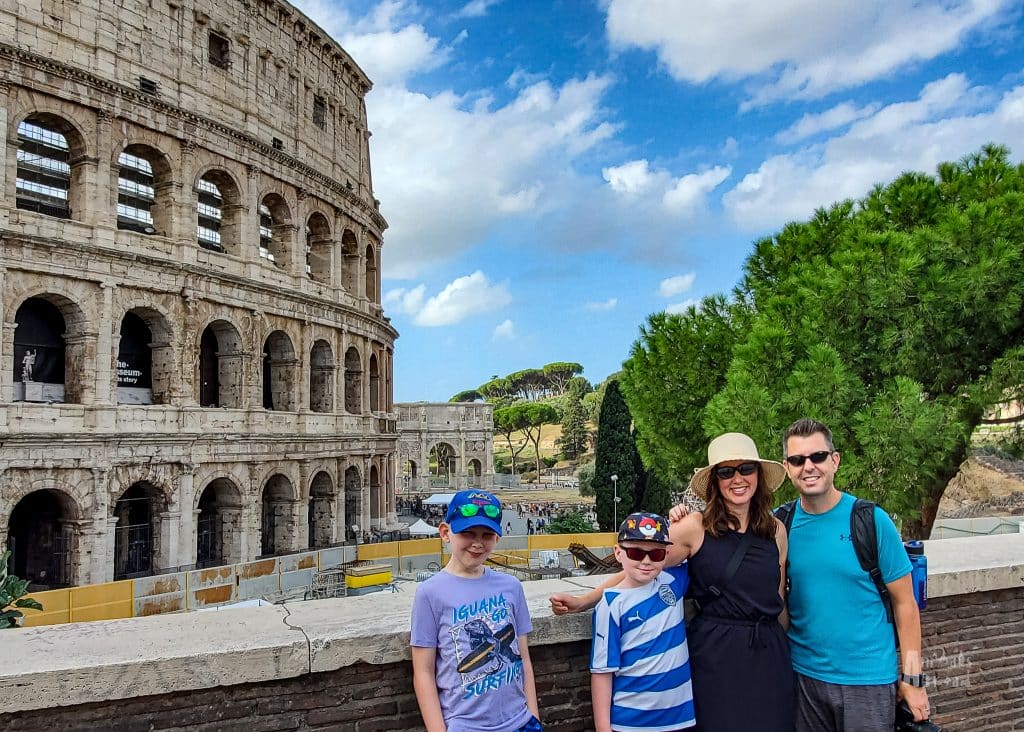
The Colosseum: Arena Floor & Underground
As we walked up to the Colosseum, it was hard not to be struck by its size. The stone amphitheatre rises like a sleeping giant, scarred by time but still standing strong nearly 2,000 years later. Weathered arches cast deep shadows over you, while crumbling pillars reach toward the sky. It’s a monument not just to ancient Rome’s power, but to its fascination with spectacle.
What surprised us most? The Colosseum hasn’t been worn by natural disaster or war. Much of the damage you see is the result of looting. After Rome fell, the once-great arena became a quarry. Travertine stone, marble, and iron clamps were pulled from the structure and reused in other buildings across the city, many of which still stand today.
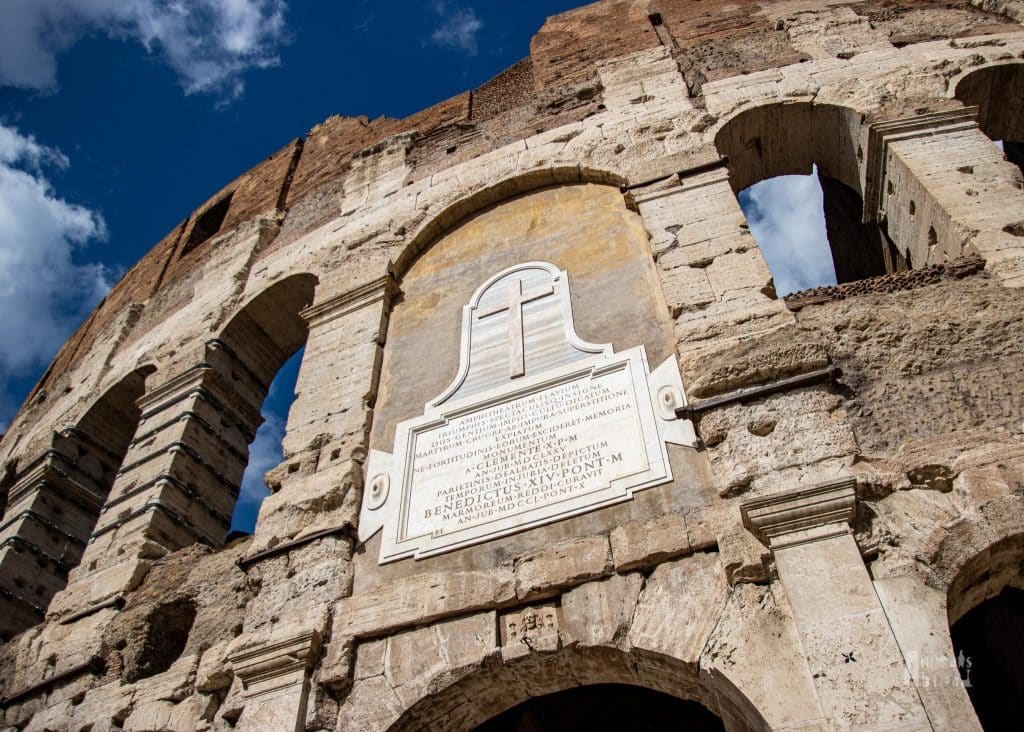
Walking onto the arena floor
Standing where gladiators once stood, reminded of the fierce battles that took place centuries ago, it was almost as if you could still hear echoes of cheers as one gladiator prevailed. You can see only a portion of the original floor now—the rest is open, revealing the maze of underground tunnels below.
Although we didn’t have access to the tunnels (tickets were sold out), our guide painted a vivid picture of what it was like below: a backstage maze where wild animals were kept in cages, where trapdoors led to dramatic entrances, and where gladiators waited for their cue. It was fascinating to imagine the tension building beneath our feet.
Inside, our guide Alessio brought the place to life. He had photos, illustrations, and stories that helped us imagine what it was like when this arena held over 50,000 spectators.
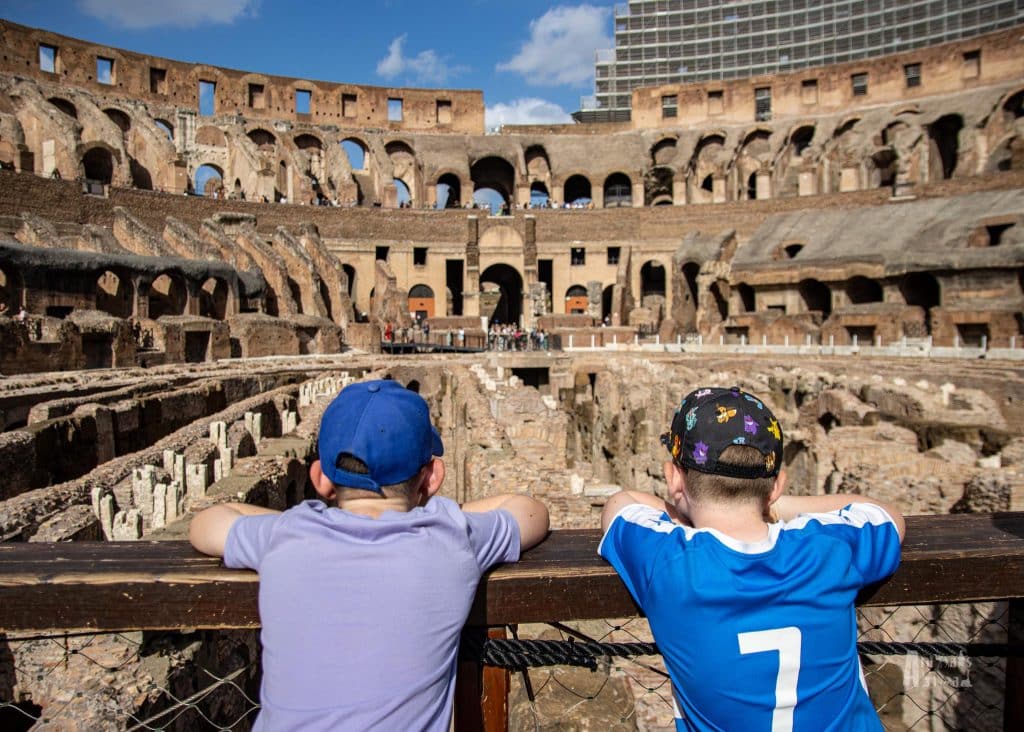
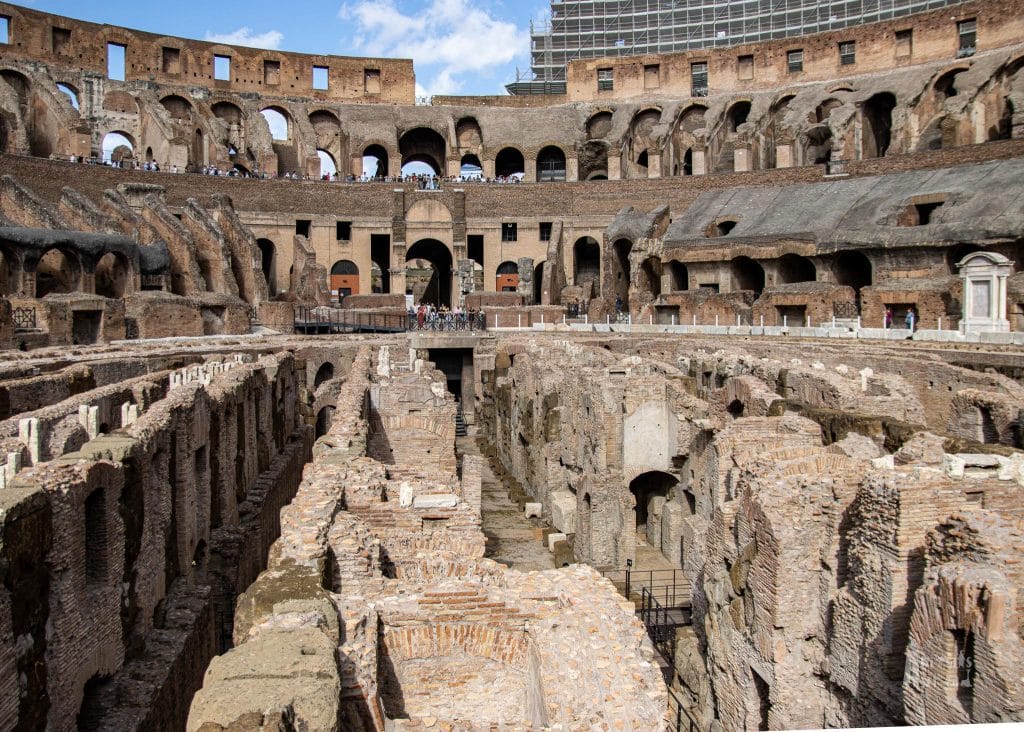
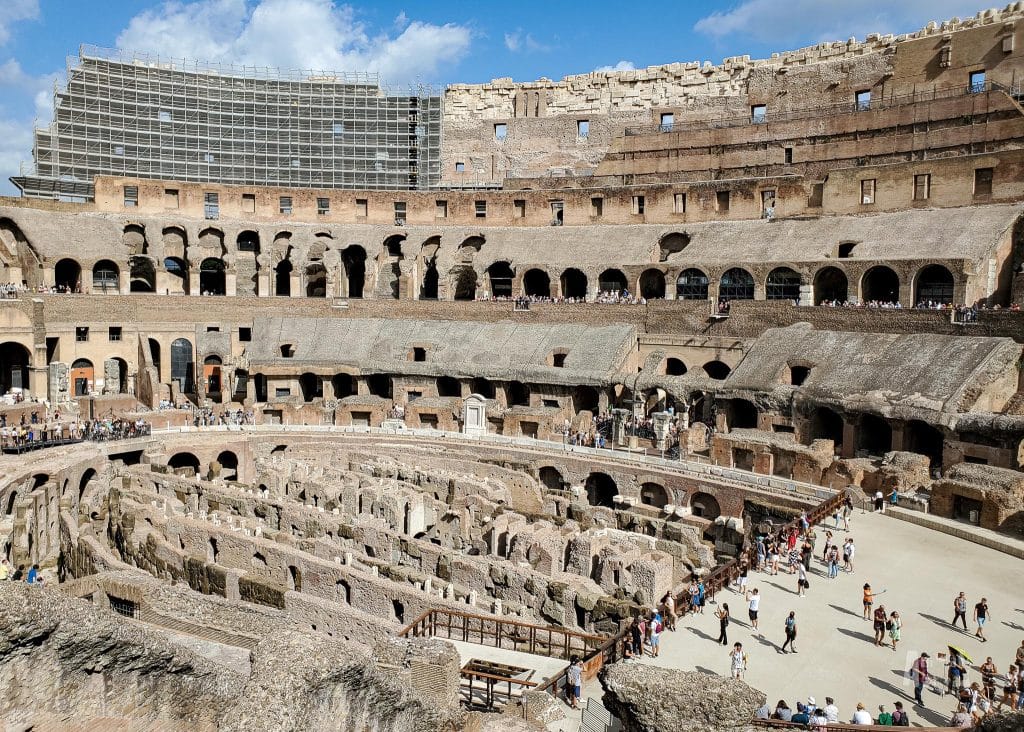
Roman Forum & Palatine Hill: Myths, Ruins, and Legends
After the Colosseum, we walked through the Roman Forum—a sprawling field of ruins where temples, basilicas, and government buildings once stood. Today, it feels like a beautiful jumble of crumbling columns, broken arches, and half-standing walls. But with the right guide, it transforms into a living storybook.
We started at the Arch of Titus, the entry to the forum, a striking monument built to commemorate the Roman victory in the Siege of Jerusalem. Its detailed reliefs show Roman soldiers carrying spoils from the temple, including the Menorah.
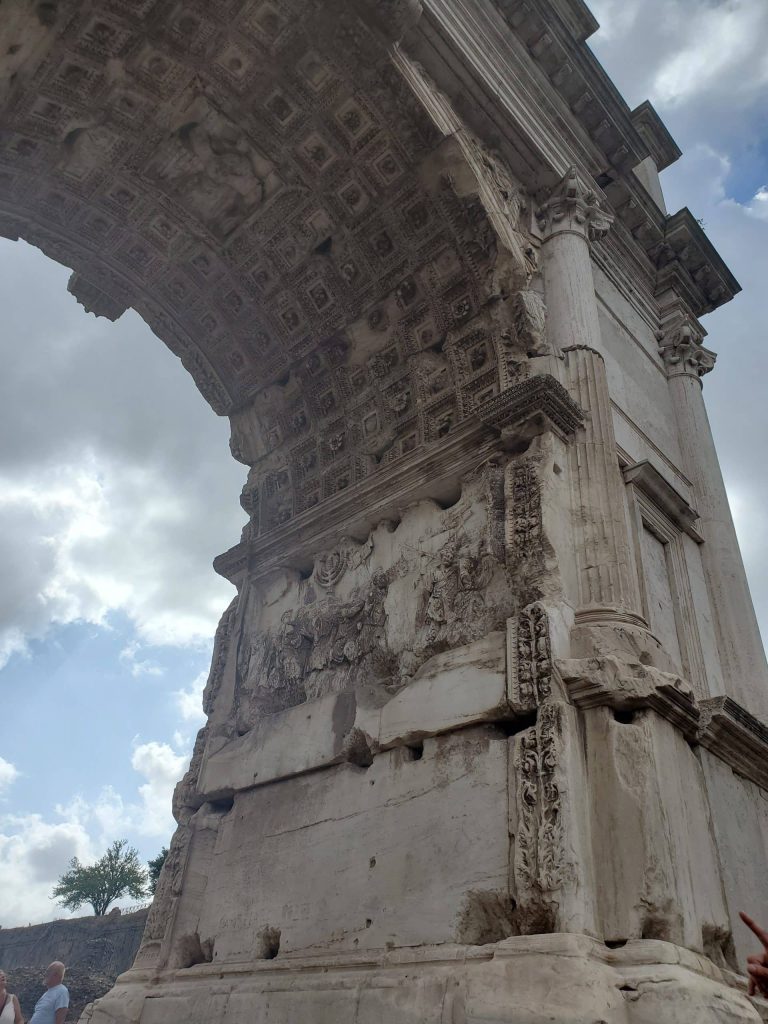
From there, we climbed up Palatine Hill, one of the legendary seven hills of Rome and said to be the birthplace of the city itself. At the top, we were rewarded with sweeping views over the Roman Forum—crumbling columns, partial facades, and weathered statues scattered across a vast expanse that once buzzed with the life of ancient Rome.
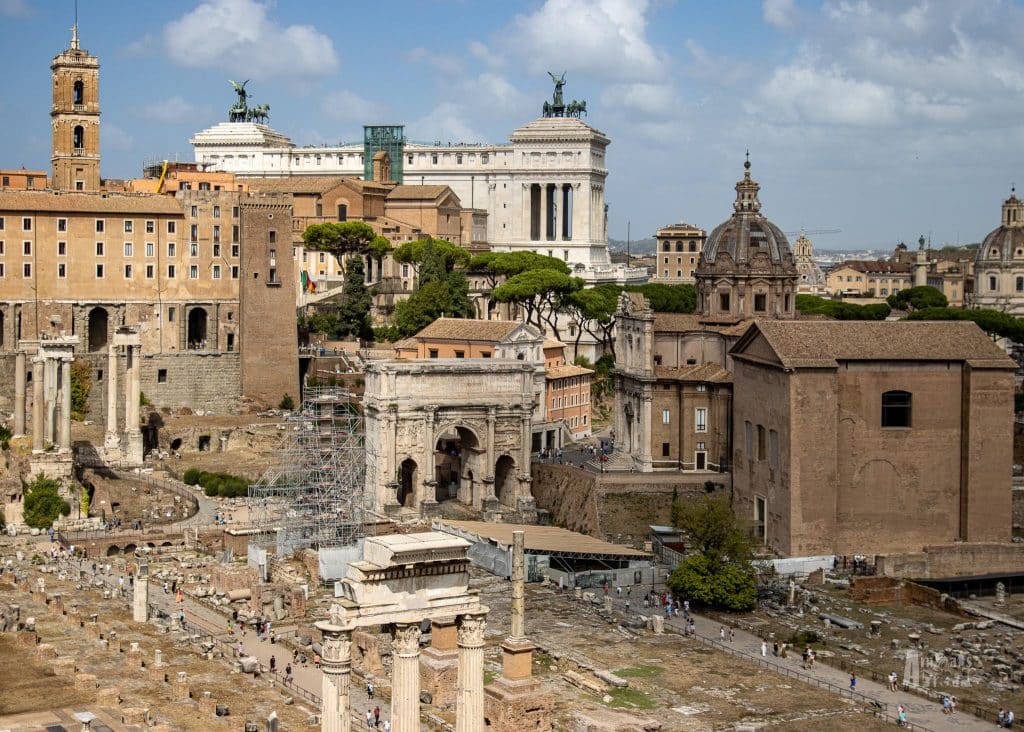
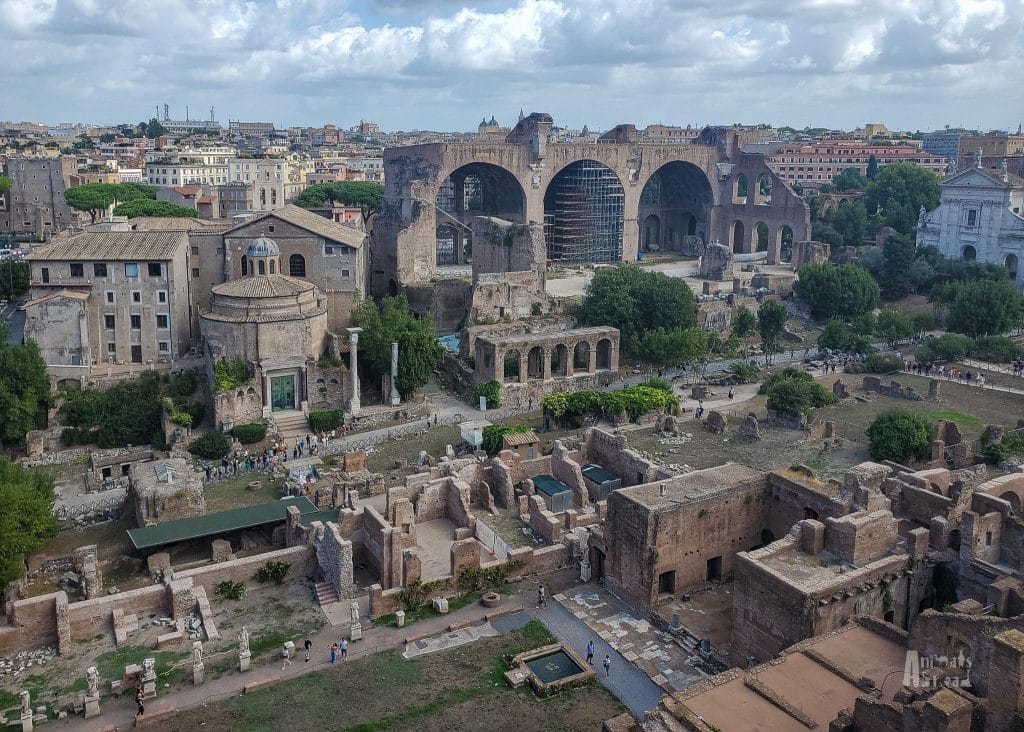
The ruins may appear as scattered stones, but through storytelling, our guide brought them to life with tales of Romulus and Remus, the twin brothers raised by a she-wolf and destined to found the city of Rome. We heard the story of the Vestal Virgins, the priestesses entrusted with keeping the sacred flame alive. The boys were especially intrigued by the legend of Castor and Pollux, twin brothers (one mortal, the other immortal) who, according to myth, appeared here after a Roman victory. When Castor died in battle, Pollux begged Zeus to share his immortality with his twin. In turn, Zeus created the constellation Gemini, so the brothers could always be together.

What Made It Memorable for the Kids
This wasn’t just a history lesson—it was an experience. Here’s what worked well for our family:
- The right guide matters. Alessio from LivTours made it engaging for both adults and kids. He brought books, props, and pictures to help us visualize ancient Rome.
- Seeing the Colosseum from multiple levels—the arena, the underground, the upper stands—helped the boys understand how it all fit together.
- Legends and stories added just the right amount of magic. Hearing about mythological twins, fearless gladiators, and sacred fires kept their attention.
- Moving at our own pace (thanks to a private tour) meant we could stop for questions, take water breaks, and let the kids lead when they were curious.
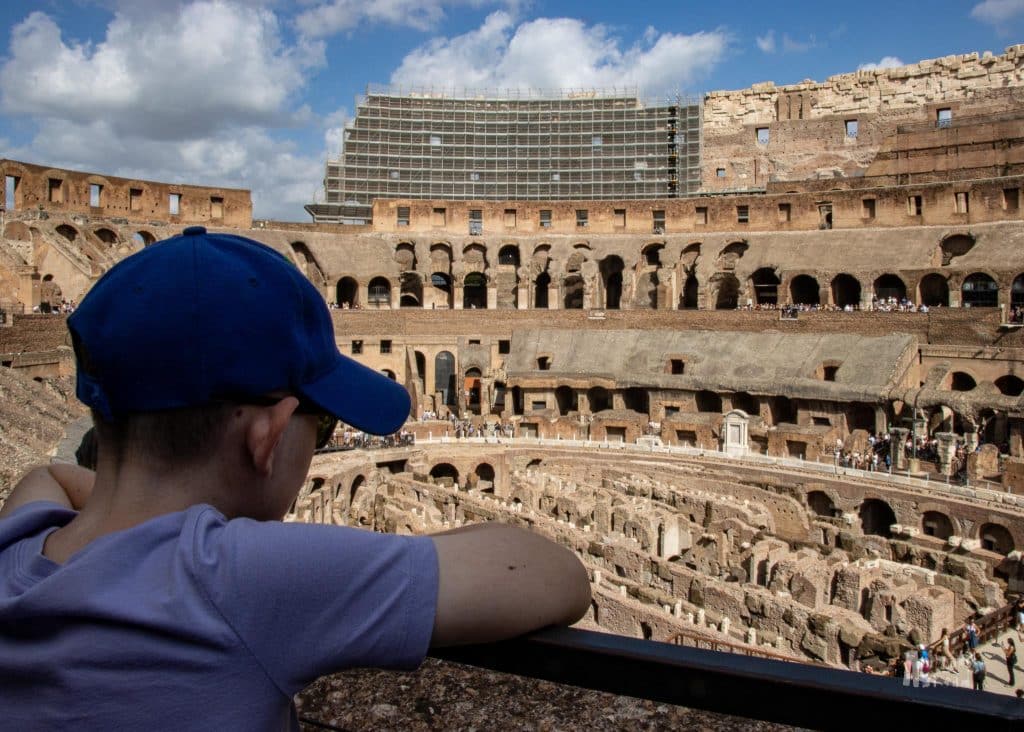
Booking Tips
Tickets: There are different levels of tickets, which range from basic (entrance to the Colosseum) to more inclusive with access to the arena floor, underground tunnels, Palatine Hill, and the Roman Forum.
Tour Provider: We used LivTours, and we highly recommend them for families. Their private tours are more expensive than group ones, but the flexibility and personalization were worth it.
Book early: Colosseum time slots, especially for the underground and arena floor access, fill up quickly.
Bring water and sun protection: There’s little shade inside the Colosseum and in the Forum.
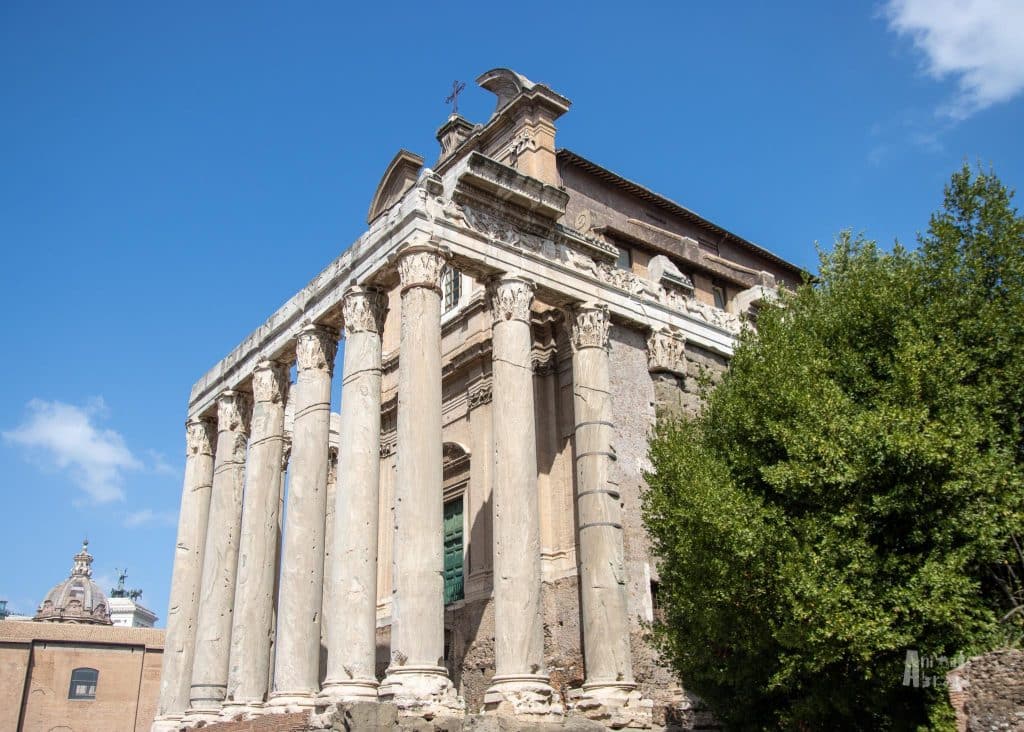
The Glow of Rome
Whether you circle back the same evening or return another day, don’t miss seeing the Colosseum after dark. Once the crowds thin and the heat subsides, the entire monument assumes a different atmosphere. Lit dramatically from within and below, its arches glow against the night sky, revealing textures and shadows you might miss during the day. Walk around the perimeter and soak in the sight—perfect for photos.
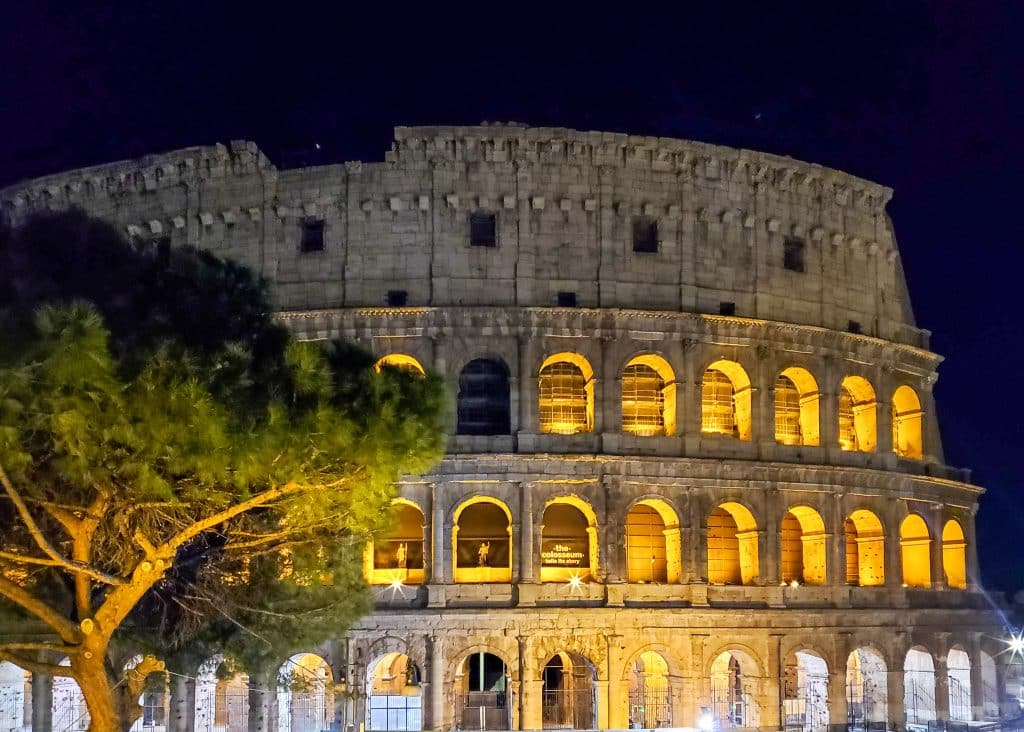
A Last Look at Ancient Rome
The Colosseum is more than just a photo stop—it’s a place where you can truly feel the weight of history. For our family, walking through its ancient walls and hearing its stories was a highlight of our trip to Rome. With the right guide and a bit of imagination, it’s easy to picture gladiators in the arena, emperors in the stands, and the sound of the roaring mob filling the air.
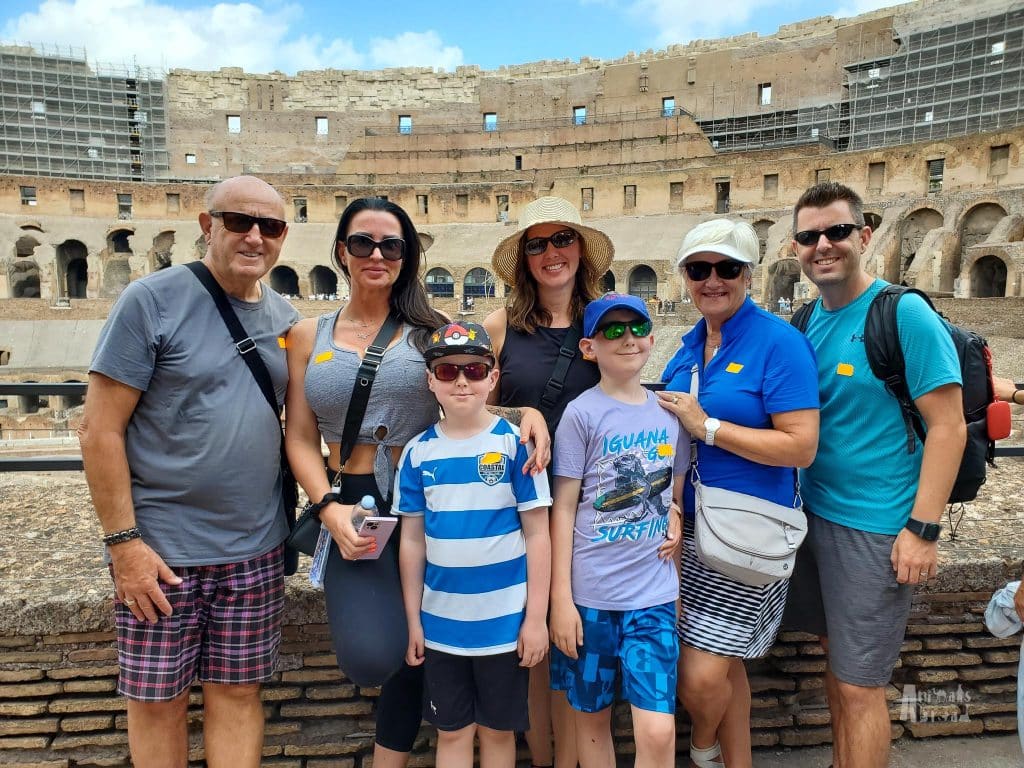
Ready to Explore Italy?
Check out these related posts to help plan your trip:
• Fun Things to Do in Venice with Kids
• Becoming Gondoliers: Learning to Row a Gondola in Venice
• 4-Day Itinerary in Rome with Kids
• The Vatican with Kids: What to Expect & How to Plan
• Roaming Around Rome: A Walking Tour for Families

